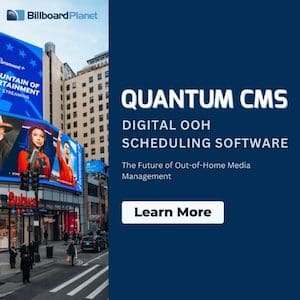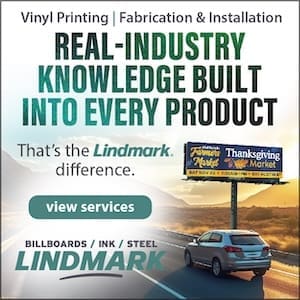
When you travel frequently for work, you’re used to checking in and out of hotels. Some luxury brands include a thoughtful touch — a small chocolate on your pillow. This tiny foil wrapper is a nice extra, but the actual value of your stay lies in the comfortable bed, the attentive service, the well-equipped gym, and perhaps the offer of a late checkout. It doesn’t replace these core amenities and wouldn’t be the reason you return next time you’re in town.
For too long, the out-of-home (OOH) advertising industry has treated measurement like chocolate on the pillow — an occasional treat rather than an essential service. Many advertisers have come to view OOH as primarily a brand-building medium, with little expectation of measurable performance. However, in an era where data-driven decision-making is the norm across other advertising channels, this approach is increasingly out of step with advertisers’ needs and expectations.
It’s time for a paradigm shift in OOH advertising. Measurement should not be an afterthought or a luxury. It must become a fundamental part of the OOH offering, as integral to the service as the ad space itself.
A paradigm shift
The advertising industry has undergone a seismic shift in recent years, driven largely by the rise of digital giants like Google, Facebook, and Amazon. These platforms have set new standards for advertising measurement, providing advertisers with robust, real-time data that allows for precise optimization of ad spend and clear attribution of business results.
For many brands, these digital platforms now command the lion’s share of ad spend, primarily due to their ability to demonstrate concrete return on investment. This shift has created a new expectation among advertisers: they won’t spend unless they can see value in an investment. In this context, the OOH industry’s traditional approach to measurement — sporadic, limited, and often treated as an add-on — is increasingly out of sync. The industry must evolve to meet these new expectations or risk losing ad dollars.
OOH media presents unique technical challenges when it comes to measurement. Unlike traditional digital advertising, where user interactions can be tracked through clicks and cookies, OOH campaigns exist in the physical world, making direct attribution more complex. However, recent years have seen significant advancements in OOH measurement capabilities.
Mobile location data, computer vision, and advanced statistical modeling techniques have opened up new possibilities for tracking OOH campaign performance. These technologies allow for more accurate estimates of ad exposure, the ability to measure foot traffic to physical locations, and even the capacity to track online behaviors influenced by OOH campaigns.
Perhaps most importantly, these advancements have enabled the implementation of “always-on” measurements for OOH campaigns. Rather than treating measurement as a one-off exercise, OOH providers can offer continuous insights throughout a campaign’s lifecycle.
Getting key insights
OOH publishers that commit to measurement can gain insights they can present to customers and use to find new ones. Studying a broader swatch of advertising campaigns offers a more comprehensive range of insights that can help both the publisher and advertiser.
For instance, one recent campaign by a large coffee chain in New York showed that customers who were exposed to an ad were nearly twice as likely to walk into the store than a control group of similar customers who didn’t see the ad. These results show that foot traffic increased even more when the ad was displayed near a store.
Contrary to the notion that OOH is purely a brand-building medium, measurement has revealed its significant impact on digital performance. A campaign for a prominent New York tourist destination, run on LinkNYC digital street kiosks, showed that customers exposed to the advertising were 52% more likely to purchase a ticket online than a control group. Furthermore, this digital performance lift tends to improve over time as customers have increased the frequency of exposure to an advertising campaign.
Perhaps most surprisingly, OOH campaigns have demonstrated highly competitive costs per acquisition (CPA) compared to other advertising channels. For example, in the higher education sector, bus media campaigns have shown an average CPA of approximately $59. This figure is remarkably competitive compared to the industry average of over $1,000.
Embracing measurement in OOH
OOH providers can foster stronger, more strategic relationships with their clients by providing ongoing, data-driven insights. Advertisers no longer buy space blindly but will engage in an ongoing dialogue if they can quantify campaign performance and optimization.
As measurement becomes a standard offering in OOH, the medium becomes more directly comparable with other advertising channels. This alignment makes it easier for advertisers to integrate OOH into their broader media mix and justify OOH spend. Advertisers are more likely to increase their investment when they see clear, measurable results from their OOH campaigns.
The technology and methodologies to achieve this are already available. What’s needed now is a shift in mindset and approach. Advertisers want to understand how their campaigns are performing so they can adjust their strategies and justify investments. OOH providers must invest in measurement capabilities and make them a core part of their offerings. Adding this level of context to campaigns makes OOH far more important than just the chocolate on the pillow — it’s a reason to come back time after time.
To receive a free morning newsletter with each day’s Billboard insider articles email info@billboardinsider.com with the word “Subscribe” in the title. Our newsletter is free and we don’t sell our subscriber list.
Paid Advertisement


















That Mr. Burrick never mentions GeoPath, OOH media’s and the US’ sole JIC, and its critical and pivotal measurement of Eyes-On, is puzzling. Without Eyes/Ears-On measurement against the brand target group for any medium there can be no outcomes which reveals the whole flaw with the use of “viewable impressions”, aka content rendered counts (No REAL OTS!), plus the recent MRC OOH Measurement Guidelines anachronism. In addition, it is the OOH creative executions and their impact that are always the primary drivers of outcomes not the media vehicle whatever the creative scope that it provides and however contextually or environmentally synergistic the billboard, panel, screen or surface is relative to the brand message. So media have to be prudent about touting their contribution to brand campaign objectives especially in a complex multi-faceted media mix. On top of this, most attribution efforts are flawed due to a lack of a complete and relevant set of meaningful data notably media attention metrics which, via Eyes-On or “visibility adjusted contacts”, OOH has provided advertisers and their agencies worldwide for the last 20 years. This OOH metrics leadership and campaign relevance has given OOH the edge over virtually all other media who have only recently caught up via the incorporation of attention adjustments.
My recent Op Ed in Media Post highlighting the insightful Motionworks blog and analysis of the dangers to OOH of the MRC OOH Measurement Guidelines (they are NOT “Standards”) underlines the relative value of OOH media but only when Global Guidelines are followed as embraced by GeoPath. https://www.mediapost.com/publications/article/397317/the-marketplace-implications-of-mrcs-ooh-standard.html